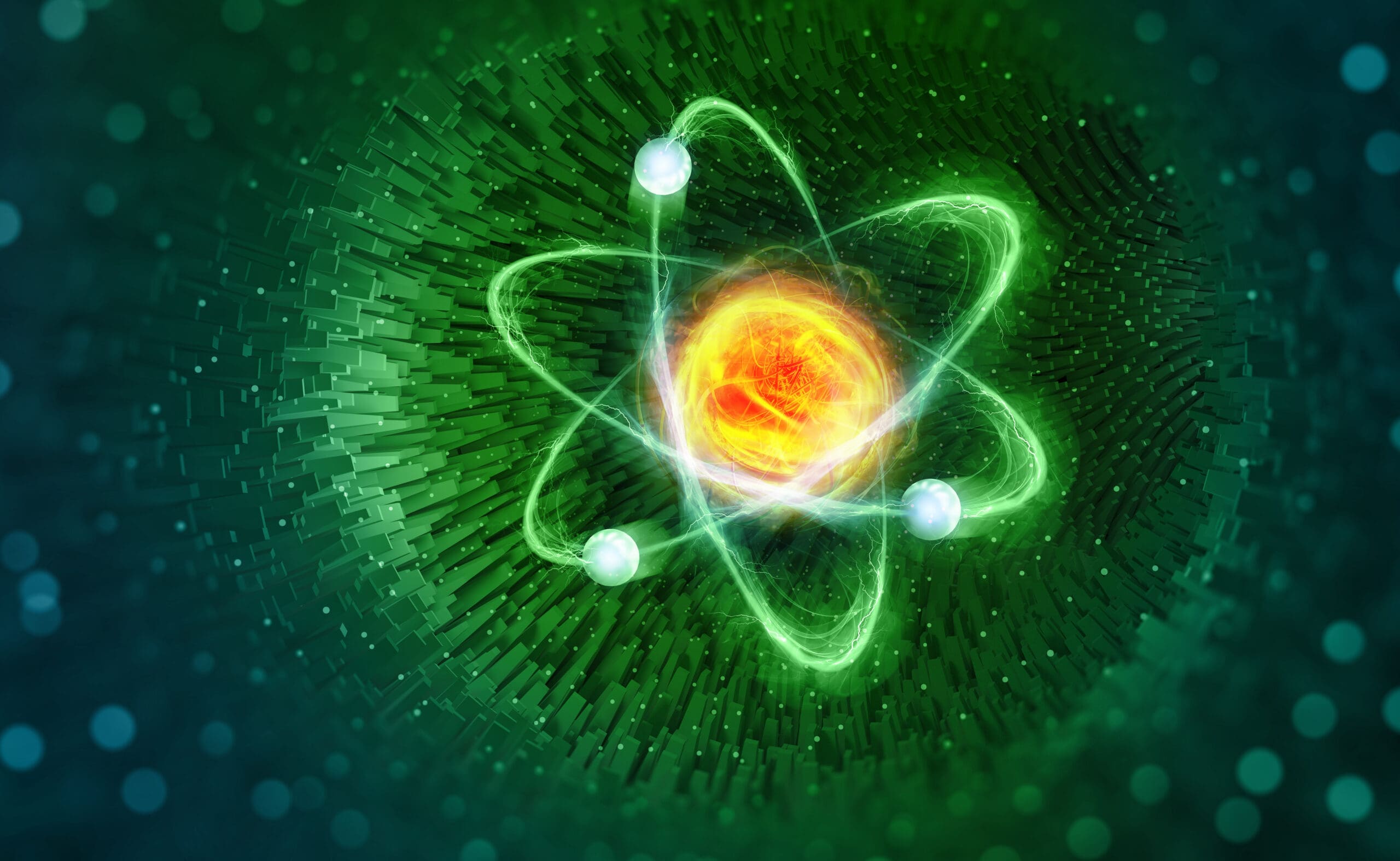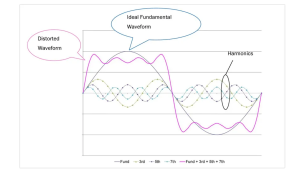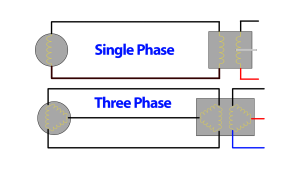Matter and energy are the fundamental components of the universe, underlying all physical phenomena and forming the basis for everything from the smallest particles to the largest galaxies. This introduction will explore the basic concepts of matter and energy, their properties, interactions, and the laws governing their conservation and transformation.

What is Matter?
Matter is any substance that has mass and occupies space. Everything around us, from the air we breathe to the planets and stars, consists of matter. Matter is composed of atoms, which are the basic building blocks of chemical elements such as hydrogen, oxygen, and carbon. Atoms themselves are made up of three main components: protons and neutrons (which form the nucleus) and electrons (which orbit the nucleus). There are smaller fundamental particles that make up these three components. However for the intent of this lesson we’re not going to delve deeper into these. For more information on Matter, Check out our “Principles of Matter” article.
States of Matter
Matter exists in several states, primarily solid, liquid, gas, and plasma. Each state has distinct characteristics based on the arrangement and energy of the atoms:
- Solids have a fixed shape and volume, with atoms tightly packed in a regular arrangement.
- Liquids have a fixed volume but no fixed shape, allowing them to take the shape of their container. The atoms are close together but can move around each other freely.
- Gasses have neither a fixed shape nor a fixed volume. Filling any container they are placed in as their atoms move rapidly and freely.
- Plasma is a high-energy state of matter where electrons are stripped from atoms, forming an ionized gas. It is found naturally in stars, including the sun.

Chemical and Physical Properties
Matter is characterized by its physical and chemical properties. These properties help scientists distinguish between different types of matter based on both observable characteristics and the potential for substances to transform under different conditions.
Physical properties, such as density, color, and boiling point, can be observed or measured without changing the substance chemically. Observing the way a substance reflects or emits light can be seen directly. For instance, copper appears reddish-brown, and gold is shiny yellow. Hardness is a measure of how resistant a substance is to various kinds of shape change when a force is applied. Informing the usability of a metal or a mineral.
Chemical properties describe a substance’s ability to undergo changes that transform it into different substances, such as iron rusting or wood burning. The ability of a substance to react with other materials and form new substances, or the degrees of oxidation a substance can undergo are important chemical properties for us to know. The pH scale of acidity or basicity is crucial in a wide range of chemical processes, from industrial manufacturing to the biological systems in our bodies.

What is Energy?
Energy is the capacity to do work or produce change and exists in various forms, all of which can be categorized as either kinetic or potential energy:
Kinetic energy
Is the energy that an object possesses due to its motion. It can be visualized as the energy that builds up when you are running or when a car speeds down a highway. The faster the object moves or the more massive it is, the more kinetic energy it has. For example:
- Imagine a ball rolling down a hill. As it rolls, it picks up speed. The faster it rolls, the more kinetic energy it accumulates. If the ball were heavier, like a bowling ball instead of a tennis ball, it would have even more kinetic energy at the same speed.
- As a pendulum swings, it reaches its maximum kinetic energy when it is at the lowest point of its swing, moving at its fastest. As it swings back up, this kinetic energy begins to convert into potential energy.
Potential energy
Is the energy that an object has due to its position, condition, or configuration, which gives it the potential to do work. Potential energy is like the energy stored in a stretched rubber band, waiting to be released. Here are a couple of examples:
- Consider a book placed on a high shelf. It possesses gravitational potential energy due to its elevation above the ground. If the book were to fall, the potential energy would convert into kinetic energy as the book picks up speed heading towards the floor.
- A bow with its string drawn back holds elastic potential energy due to the deformation of the bow. The more the bow is drawn, the more energy is stored. When released, this energy is transformed into kinetic energy of the arrow, propelling it forward swiftly.
Forms of Energy
There are many types of energy. All of which can be transformed into other types making each extremely useful for performing work. The primary types of energy utilized for work production are:
- Mechanical energy combines kinetic and potential energies in systems that perform mechanical work, such as moving elevators or swinging pendulums.
- Thermal energy is the internal energy present in a system due to its temperature, related to the random, disordered motion of its molecules.
- Chemical energy is stored in the bonds of chemical compounds and is released or absorbed during chemical reactions.
- Electrical energy is generated by the movement of electrons or other charged particles.
- Radiant energy, or light, is a form of energy that can travel through space.
- Nuclear energy comes from splitting (fission) or merging (fusion) the nuclei of atoms, releasing or absorbing tremendous amounts of energy.
- Wind energy is a form of kinetic energy that is derived from the movement of air. It is harnessed by wind turbines, which convert the kinetic energy of wind into mechanical energy.
- Hydro energy is primarily derived from the potential energy of stored water, or utilized through tidal kinetic energy. This energy is converted to kinetic energy when the water is released from a dam through turbines where it transfers to mechanical energy.

For more information on Energy, check out the “Principles of Energy” article.
Conservation of Energy
The law of conservation of energy states that energy cannot be created or destroyed. It can only be transformed from one form to another. This principle is fundamental in all areas of physics and is crucial for understanding the behavior of both mechanical systems and large-scale phenomena such as weather patterns and planetary motion. This is how we’re able to “generate” electricity; by utilizing natural energy from falling water we spin a turbine, transferring that natural energy into mechanical energy. This spinning generates the movement of magnets near electrical conductors, transferring mechanical energy into electrical energy which is transmitted and distributed for widescale use.
Energy transfers and transformations are at the heart of nearly all physical processes. For example, in a car engine, chemical energy stored in fuel is transformed into thermal energy by combustion, which in turn is converted into mechanical energy to move the car. During this process no energy is destroyed. Rather it is all simply converted from one form to another through the entire process.
Interaction Between Matter and Energy
The interaction between matter and energy, as well as the ability to perform work or produce change, are intertwined in several interesting ways:
- Heat Transfer: Thermal energy can be transferred between different bodies or between a body and its environment through conduction, convection, or radiation.
- Electromagnetic Applications: Electric and magnetic fields interact with charged particles in matter. Leading to a variety of applications including electric circuits and radio transmissions.
- Mass-Energy Equivalence: According to Einstein’s famous equation
, mass can be converted into energy and vice versa. This principle is key to understanding nuclear reactions and the life cycles of stars.
There are three primary modes of heat transfer: conduction, convection, and radiation.
Conduction
Conduction is the process by which heat energy is transmitted through collisions between neighboring molecules, primarily in solids. For instance, when a metal spoon is placed in a hot cup of coffee, thermal energy moves from the hot coffee to the cooler spoon by direct molecular contact. Gradually making the spoon hot.
Convection
Convection occurs in fluids (liquids or gases) where warmer parts of a fluid rise and cooler parts sink. Setting up a circulation that transfers heat. This can be observed in the boiling of water. Where hot water from the bottom of the pot rises to the top, cools, and then sinks, continuously transferring heat within the pot.
Radiation
Unlike conduction and convection, radiation does not require any medium to transfer heat. Heat is transferred in the form of electromagnetic waves. The warmth felt from sunlight is a result of radiant heat transfer from the Sun across the vacuum of space to Earth.
The interaction of electromagnetic fields with matter is another critical area where energy influences matter. Charged particles in matter respond to electromagnetic fields, leading to numerous uses. When electric fields are applied in a circuit, they cause electrons in the conductor (typically a metal) to move. This process creates an electric current. This principle is the basis for virtually all electronic devices, from simple light bulbs to complex computers. Electromagnetic waves can be manipulated to carry information over vast distances, a principle utilized in radio communications. Transmitters convert audio signals into electromagnetic waves. These waves travel through the air and are received by radio receivers, where they are converted back into sound.

Perhaps one of the most profound interactions between matter and energy is encapsulated in Einstein’s equation, , which shows that energy and mass are interchangeable. In nuclear fission and fusion, small amounts of mass are converted into vast quantities of energy. For example, in the sun, hydrogen nuclei fuse to form helium. A process that results in a loss of mass but leads to the production of a tremendous amount of energy, which we receive as sunlight. In particle accelerators, particles are sped up to high velocities (close to the speed of light), increasing their mass as per the principles of relativity. When these particles collide, the energy can be so high that it creates new particles. Essentially converting kinetic energy back into mass.
Conclusion
Understanding matter and energy is essential for deciphering the universe at both the smallest and largest scales. From the kinetic energy of an orbiting satellite to the chemical energy in our food, from the operation of massive power stations to the interactions within atomic nuclei. The concepts of matter and energy underpin all physical sciences. This foundational knowledge not only enriches our understanding of the natural world but also empowers us to manipulate these elements in technology, industry, and research.






